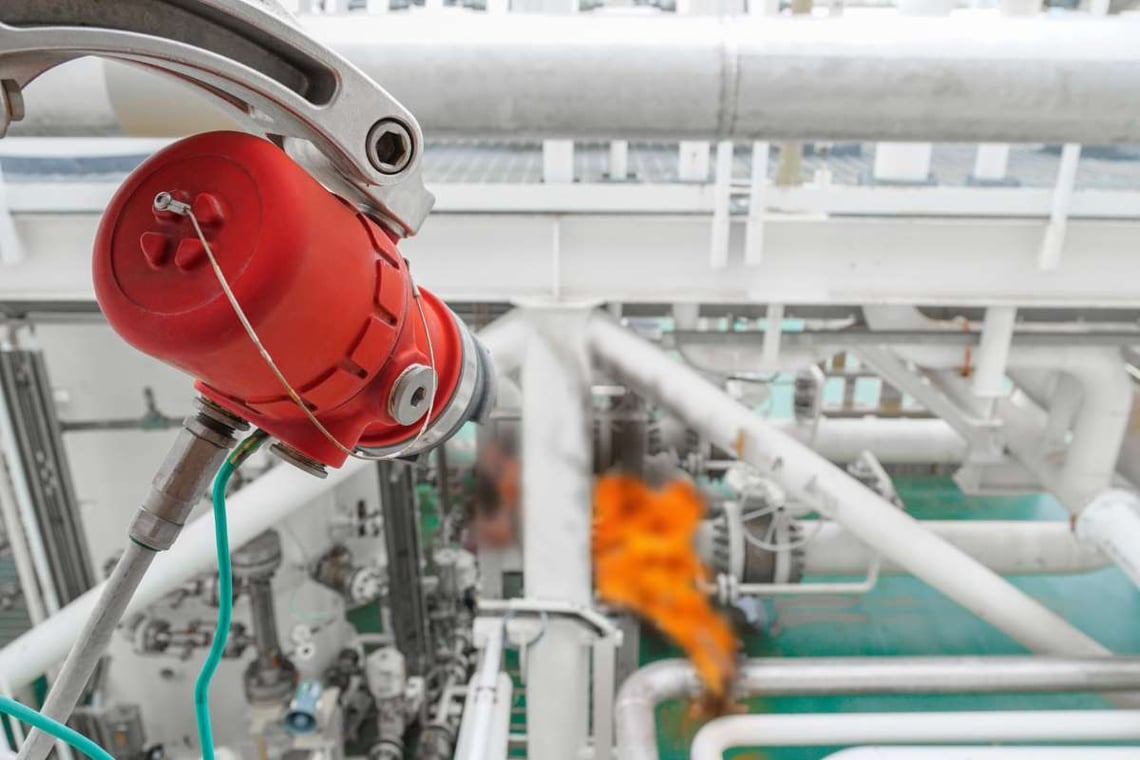
Fire detection technology has changed in recent years, giving business owners various choices for flame detectors. Whether you own a commercial business or an industrial facility, it’s important to understand the differences between these alarm systems. This overview will help you choose the best detector for your facility.
What Are the 4 Common Types of Fire Detectors?
There are four common types of flame detectors, each using a different type of technology to detect fires.
1. UV (Ultraviolet) Flame Detectors
Most types of fires give off UV radiation and an alarm that detects that radiation can provide an early warning of a fire. Fires fueled by hydrocarbon, halogen, and metals give off more UV radiation, increasing the effectiveness of this type of alarm in facilities that use those substances.
UV detectors are very effective in detecting a fire that erupts within 50 feet of the alarm. Since this detector is less effective in sensing fires at a greater distance, you may need one alarm for every 50 feet of floor space.
2. IR (Infrared) Flame Detectors
As a fire burns, it emits hot gasses that contain infrared radiation. An IR flame detector will identify this unique radiation signature. The infrared technology uses an IR camera to look for visible signs of the fire, so the alarm won’t sound unless there are flames present.
In some cases, very hot gasses and heated surfaces can cause the alarm to sound without flames present. If your facility has a commercial kitchen or another extreme heat source, this may not be the best alarm for your building.
3. Hybrid UV/IR Detectors
In this type of detector, the UV detection technology backs up the IR system, meaning both types of radiation must be present in the fire. While this reduces the likelihood of a false alarm, it also means certain types of fires may not trigger the alarm. You can use this type of alarm outdoors as well as inside the facility.
4. Multi-Spectrum Infrared (MSIR) Fire Alarm Systems
This type of alarm looks for IR signals on a few different wavelengths. It can detect fires through smoke and at greater distances of up to 200 feet. The technology also reduces the risks of false alarms since heated surfaces and harsh lighting won’t trigger them. This is another type of fire detector that’s effective in both indoor and outdoor environments.
Which Fire Alarm Is Best for Your Facility?
When looking at the various types of fire alarm systems on the market, customize your search to your unique business needs. Consider the materials your business uses or maintains, the size of your facility, and whether you’ll need fire detection in an outdoor environment.
You should consider response times as well. You may need an alarm that can detect fires at greater distances without false alarms disrupting your operations. While each system has its benefits and drawbacks, it will be up to you to determine which factors are your biggest concerns.
Don’t Be Afraid to Seek Help
If you’re still unsure about which fire detector your business needs, consult a Koorsen expert by utilizing our contact us page. The insight of knowledgeable professionals can help you get the detectors that will best protect your facility.


